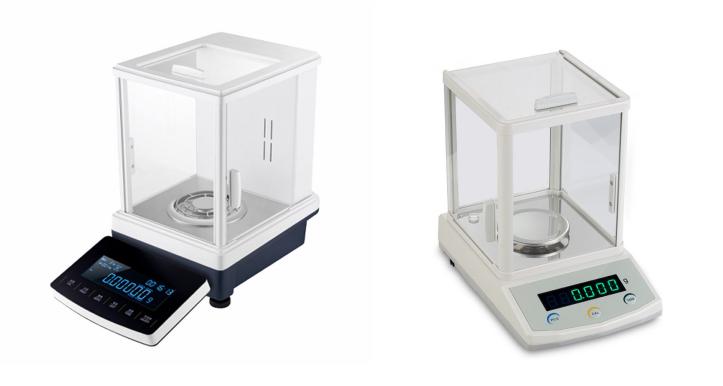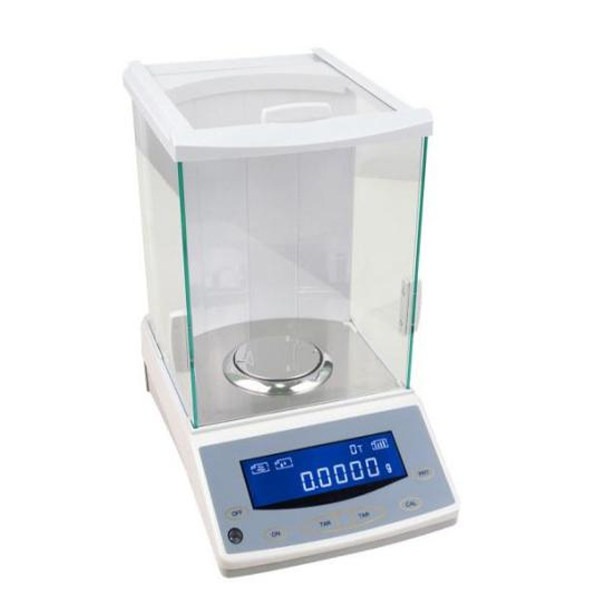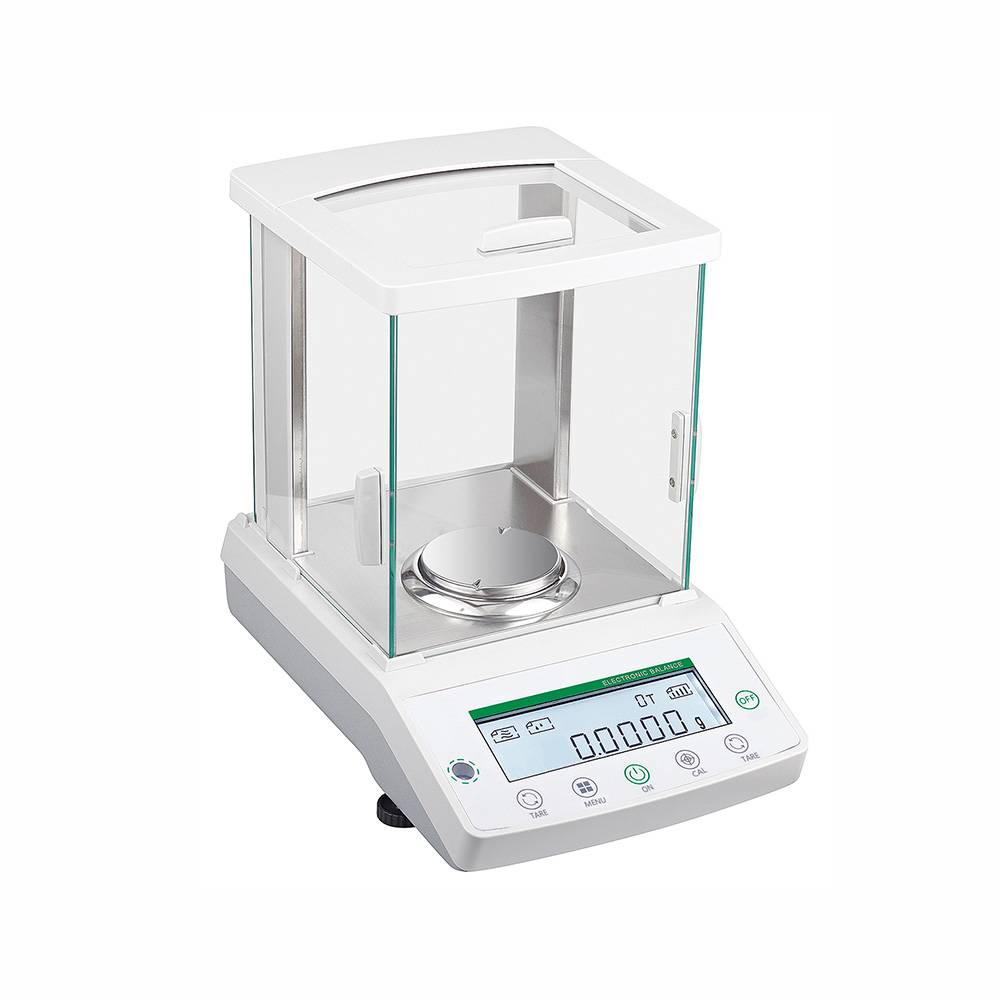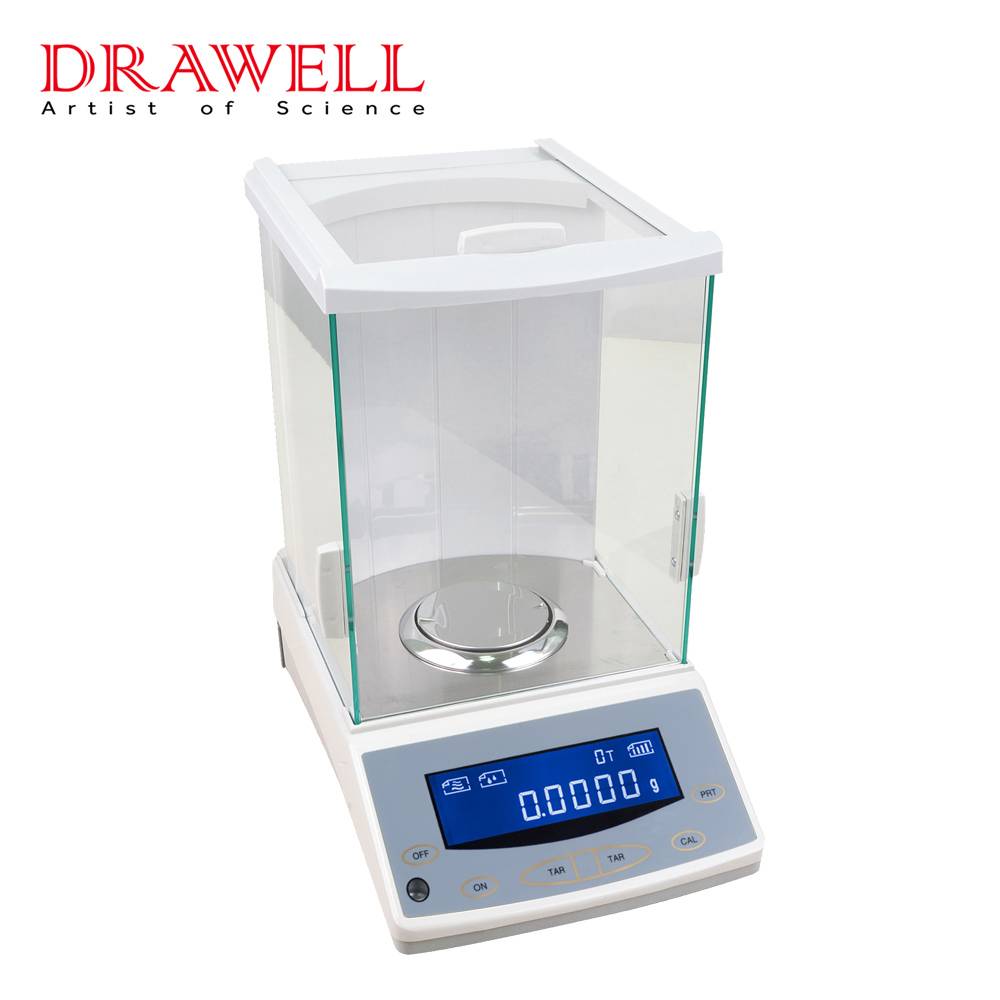Researchers and professionals working in biochemistry laboratories rely on a variety of sophisticated tools to perform exact measurements, and the analytical balance is at the heart of these measurements. This article focuses on the topic of analytical balance in biochemistry, shedding light on their significance, principles of operation, key applications in biochemistry and their impact on research outcomes.

Functions of Analytical Balance in Biochemistry
Analytical balances are highly sensitive tools that are used to accurately measure mass. They work on the electromagnetic force restoration principle, in which an electromagnet applies a force on the weighing pan to offset the force of the sample being weighed. When these forces are balanced, the balance reaches equilibrium, yielding a precise measurement of the sample’s mass.
The high precision and sensitivity of analytical balances distinguishes them. These balances have sub-milligram resolutions and can measure mass to the milligram level. This level of precision is crucial in biochemistry, where even minute quantities of substances can have significant biological effects.

Key Applications of Analytical Balance in Biochemistry
Analytical balances find diverse applications in the field of biochemistry, playing a pivotal role in a wide range of experiments and analyses.
1. Quantitative Analysis of Biomolecules
- Proteins: Analytical balances are used to precisely measure protein samples in gel electrophoresis, Western blotting, enzyme tests, and protein purification procedures.
- Nucleic Acids: Analytical balances are critical in DNA and RNA research for correctly measuring nucleic acid samples and assuring precise measurements for techniques such as PCR, DNA sequencing, and molecular cloning.
2. Drug Discovery and Formulation
- Drug Components: Analytical balances are employed in pharmaceutical biochemistry for measuring exact quantities of active pharmaceutical ingredients (APIs) and other components during drug formulation and development.
- Drug Concentrations: Analytical balances are used in pharmacokinetic investigations to prepare pharmacological solutions with accurate concentrations for assessing drug absorption, distribution, metabolism, and excretion.
3. Enzyme Kinetics and Assays
Analytical balances are required for accurately preparing enzyme and substrate concentrations in enzymatic tests, which aids in the research of enzyme kinetics and the measurement of reaction rates.

4. Cell Culture Experiments
- Culture Media: Analytical balances play a critical role in cell culture work by accurately measuring and preparing culture media, growth factors, and supplements, ensuring consistent conditions for cell growth and experimentation.
- Harvested Cells: In cell biology and biochemistry, analytical balances are used to precisely measure and quantify cells harvested for various analyses, such as protein expression studies or cellular signaling experiments.
5. Metabolomics and Metabolic Studies
Metabolite Quantification: Analytical balances are utilized in metabolomics to measure and quantify metabolites accurately. This is crucial for studying metabolic pathways, identifying biomarkers, and understanding the metabolic changes associated with diseases.
6. Solution Preparation
Analytical balances are employed for accurately measuring and preparing solutions of reagents, buffers, and standards used in various biochemical assays and experiments. This ensures the reproducibility and reliability of experimental results.
7. Quality Control in Biochemical Research
Analytical balances are used in biochemical laboratories for quality control, ensuring that chemicals, reagents, and samples are precisely measured to fulfill the needed requirements and standards.
8. Isotope Labeling Studies
In studies involving isotopic labeling, such as stable isotope labeling in proteomics, analytical balances are used to measure and prepare isotope-labeled compounds with high precision.
9. Biophysical Studies
In structural biology and biophysics, analytical balances are crucial for accurately weighing samples of proteins, nucleic acids, or other biomolecules for techniques like X-ray crystallography, NMR spectroscopy, and mass spectrometry.
10. Microorganism Research
Analytical balances are used in microbiology and biochemistry to weigh accurate quantities of microbial cultures, growth media, and antibiotics, ensuring accuracy in microbial physiology and biochemistry research.

Calibration and Maintenance for Using Analytical Balance in Biochemistry
Regular calibration is required to ensure the accuracy of analytical balances. Calibration entails comparing balance readings to known masses and correcting for any differences.
Here’s a chart outlining the calibration and maintenance procedures for using analytical balances in biochemistry
| Procedure | Description |
| Initial Calibration | Conduct initial calibration following manufacturer’s instructions using standard weights to calibrate across the balance’s entire range. |
| Routine Calibration | Schedule routine calibrations, ideally daily or before each use, using calibrated weights of known mass in a controlled environment. |
| Record Keeping | Maintain detailed records of calibration dates, results, and adjustments made during calibration for quality control and compliance purposes. |
| Adjustments | Make adjustments following manufacturer’s instructions if the balance is out of calibration, avoiding unauthorized adjustments. |
| Cleaning | Regularly clean the balance using a soft brush or lint-free cloth and mild detergents or cleaning solutions recommended by the manufacturer. |
| Leveling | Ensure the balance is placed on a stable, level surface to prevent inaccuracies due to uneven weight distribution. |
| Environment Control | Maintain consistent environmental conditions such as temperature and humidity to minimize fluctuations that could affect balance performance. |
| Verification of Readability | Periodically verify the readability of the balance by weighing standard masses across its capacity to ensure accurate measurement within specified resolution. |
| Performance Checks | Conduct routine performance checks to ensure the balance functions correctly, testing response time, repeatability, and linearity. |
| Component Inspection | Regularly inspect components such as the weighing pan, draft shield, and doors for signs of wear or damage, replacing any worn parts promptly. |
| Scheduled Maintenance | Follow the manufacturer’s recommended maintenance schedule for lubrication, calibration checks, and other servicing tasks. |
Challenges and Considerations for Using Analytical Balance in Biochemistry
While analytical balances are essential instruments in biochemistry, there are several considerations.
1. Sample Preparation
Biochemical samples often require meticulous preparation to ensure accurate weighing. Factors such as moisture content, static electricity, and sample heterogeneity can affect measurements. Proper sample handling techniques must be employed to minimize errors.
2. Environmental Conditions
Analytical balances are sensitive to environmental factors such as temperature, humidity, and air currents. Fluctuations in these conditions can impact measurement accuracy. It’s essential to control the balance’s environment and perform calibrations in stable conditions.
3. Static Electricity
Biochemical samples, especially powders and fine particles, can generate static electricity, leading to inaccuracies in weighing. Anti-static measures such as using ionizers or static-dissipative materials can help mitigate this issue.
4. Contamination
Contamination from previous samples or external sources can introduce errors in measurements. Regular cleaning and maintenance of the balance, along with proper handling procedures, are crucial to prevent contamination.
5. Vibration and Mechanical Shock
Vibrations and mechanical shocks from nearby equipment or foot traffic can disrupt measurements, particularly for sensitive analytical balances. Locating the balance in a stable environment and using vibration-isolation equipment can minimize these effects.
6. Instrument Sensitivity
Analytical balances have high sensitivity, making them susceptible to even minor disturbances. Users must be trained in proper operation techniques to minimize errors and ensure consistent results.
7. Budget and Resources
Acquiring and maintaining high-quality analytical balances can be costly. Adequate budget allocation for equipment purchase, calibration, and maintenance is necessary to ensure reliable measurements in biochemistry applications.
8. Regulatory Compliance
In many biochemistry laboratories, compliance with regulatory standards such as Good Laboratory Practices (GLP) or Good Manufacturing Practices (GMP) is essential. Ensuring that analytical balances meet regulatory requirements and are properly maintained is crucial for compliance.
9. Data Integrity
Maintaining data integrity throughout the weighing process is critical for reproducibility and traceability. Proper documentation of calibration, sample preparation, and measurement results is necessary to ensure the accuracy and reliability of data generated using analytical balances in biochemistry.
Conclusion
Analytical balances are subtle but vital allies in the frenetic world of biochemistry, where advances frequently depend on the precision of measurements. These precision devices continue to evolve as technology advances, providing biochemists with the tools they need to unravel the complexities of life at the molecular level. Using an analytical balance in biochemistry requires precise calibration and regular maintenance to ensure accurate and reliable measurements. Addressing the challenges in analytical balance measurements in biochemistry laboratories requires careful planning, implementation of best practices, and ongoing training and oversight to maintain accuracy and reliability.


